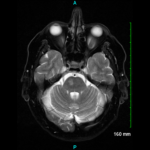Craig D. Scoville, MD, PhD,
rheumatologist,
Idaho Falls, Idaho
NEED TO KNOW
Send us your clinical case!
Want to hear how your colleagues would treat a challenging medical case from your practice? Send us details at [email protected] and we may publish your case in an upcoming issue of The Rheumatologist.
Health Professionals Offer “Crisis” Control
I would like to suggest that, along with the funding to increase rheumatology’s presence in academia (suggested in “Avert Rheum’s Coming Crisis,” September 2007 TR, p. 6), consideration should be given to nurse practitioners (NPs) and physician assistants. I’m suggesting that a focused training program for rheumatology mid-level providers (akin to a fellowship) would benefit the physician, provider, and public. The level of education required of mid-level providers, especially NPs, prepares them for both academic and clinical pursuits. Thoughtful inclusion of a select group of mid-level providers in your endowment plan could support and enhance physician-led efforts to meet the growing needs in rheumatology while protecting and preserving overall funding.
Fortunately I am in a position to personally support my suggestion. I am in the last year of an NP program and am working with a group of research-oriented rheumatologists. There is an active fellowship program for physicians at the University of Arizona. Though there is currently no parallel track for mid-level providers, I hope my continued association with the University of Arizona may allow for the creation of such a pathway.
Steve Edelman, RN, BSHCS, CCRP,
research nurse,
University of Arizona Arthritis Center,
Tucson
Evidence-based Medicine Has Limits
I read with much interest your article, “Make Peace with Complexity” (May 2007 TR, p. 6), where you stated that, “While, as professionals, we may pride ourselves for being evidence based, often the evidence simply does not exist.” In the past few years (and this will probably continue in the near future), the craziness to discuss evidence-based medicine in almost every discipline of medicine worldwide has seemingly (and unfortunately) made evidence-based medicine the only reason to learn and practice medicine. In reality, evidence-based medicine studies only clinical cases with many exclusions and inclusions. Based on my clinical practice for more than 20 years (excluding those five years in United States), evidence-based medicine quite often does not fit well with the complexity of real-life, daily patient conditions that need a lot of decision-making.
As for your case of acute gouty attack with moderate renal insufficiency, obvious heart failure, previous pulmonary embolism, and chest X-ray infiltration of unknown cause, I would like to use colchicine 0.5 mg qd (the uniform tablet dosage available in Taiwan) together with a short-term, small dose of oral prednisolone (for example, 0.2–l0.3 mg/day/kg for two days with monitoring of clinical improvement or aggravation). Of course, a lung infiltrate study has to be worked up aggressively at the same time. By the way, do you think the above-mentioned small prednisolone dose for two days will affect the immunologic function significantly?

